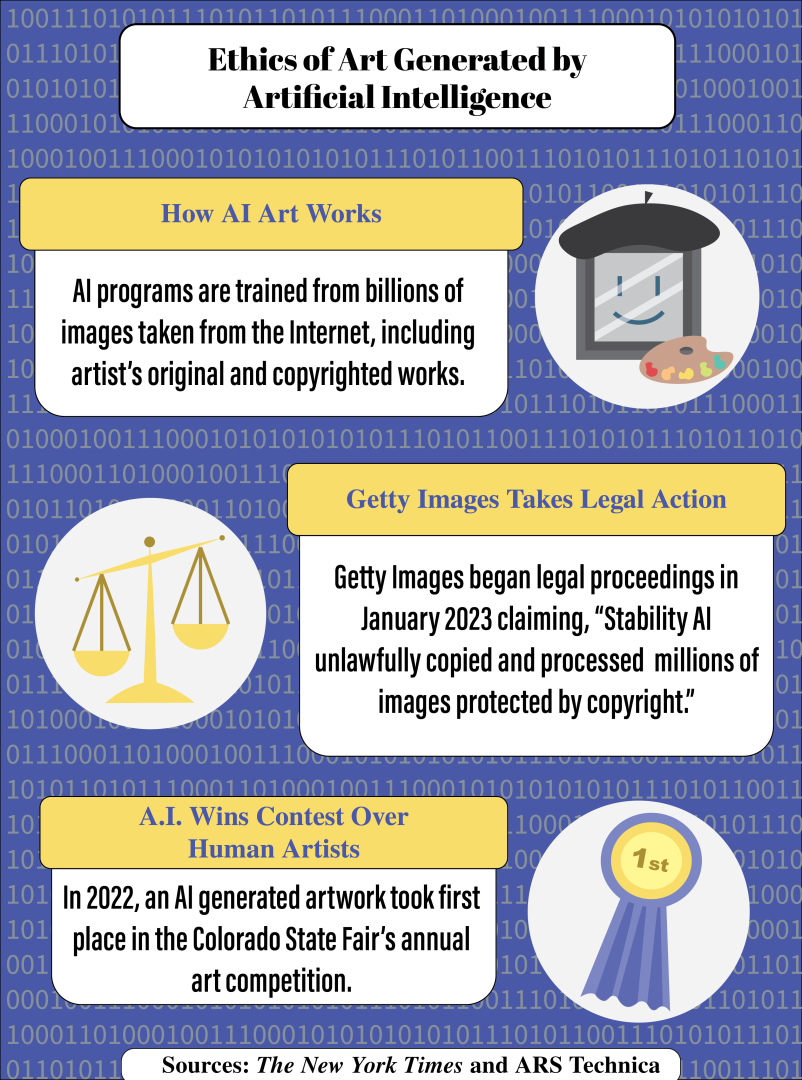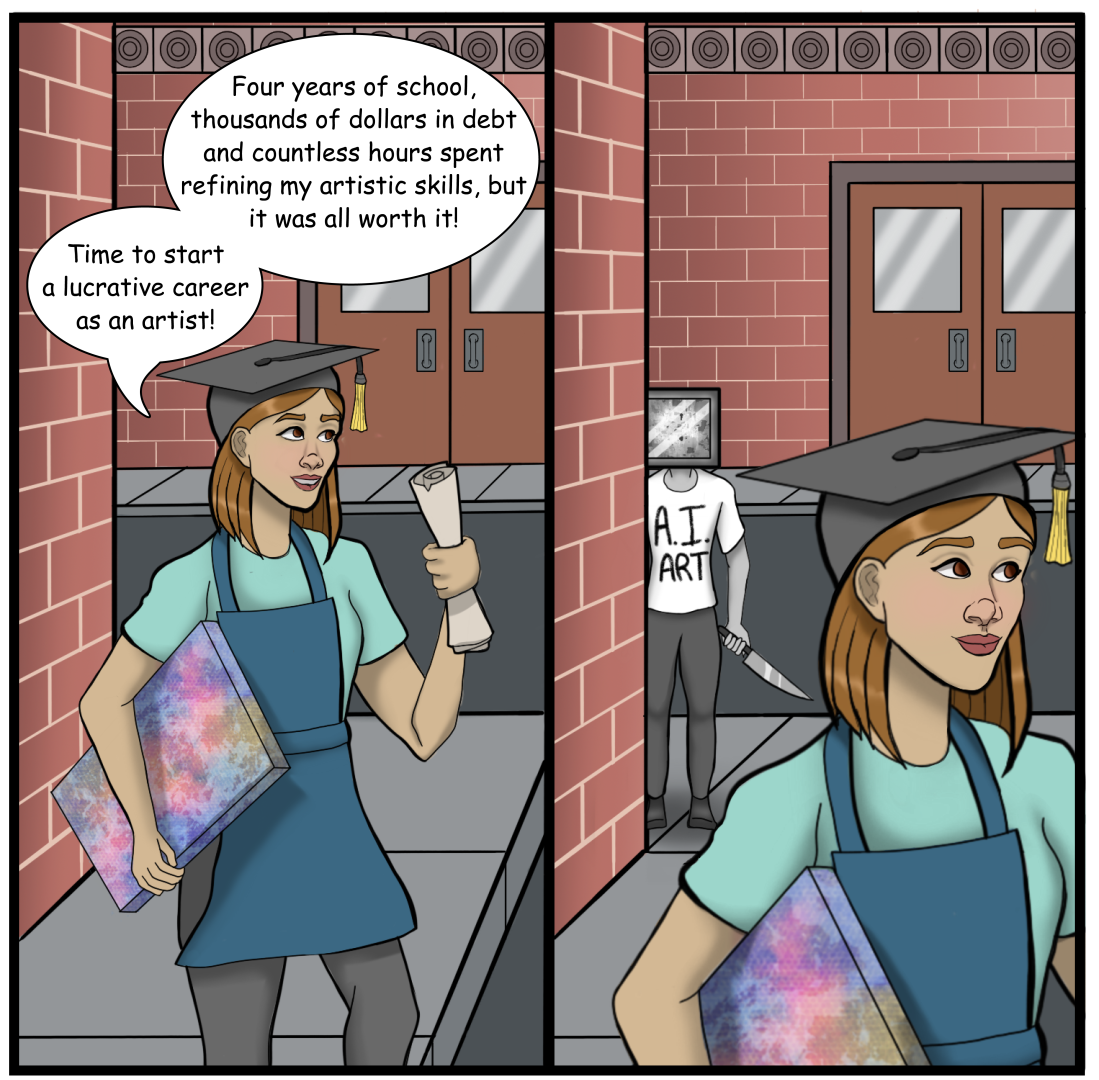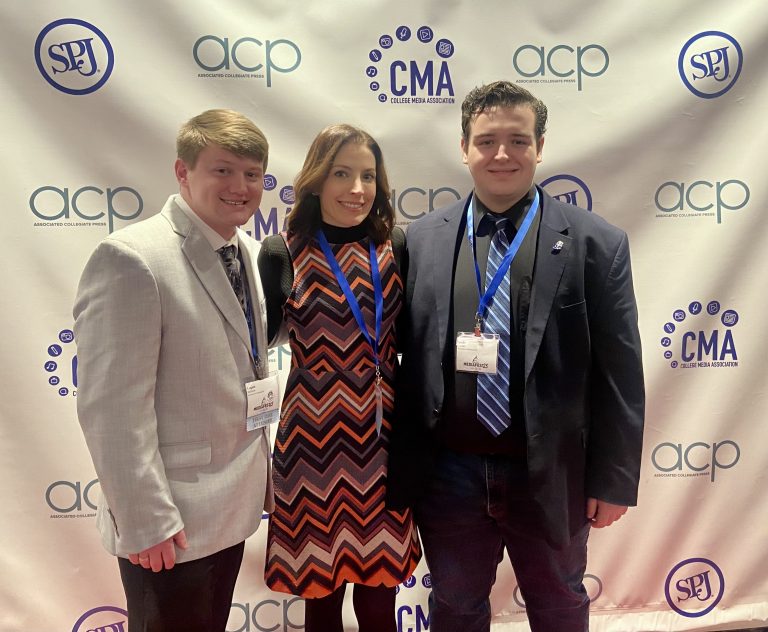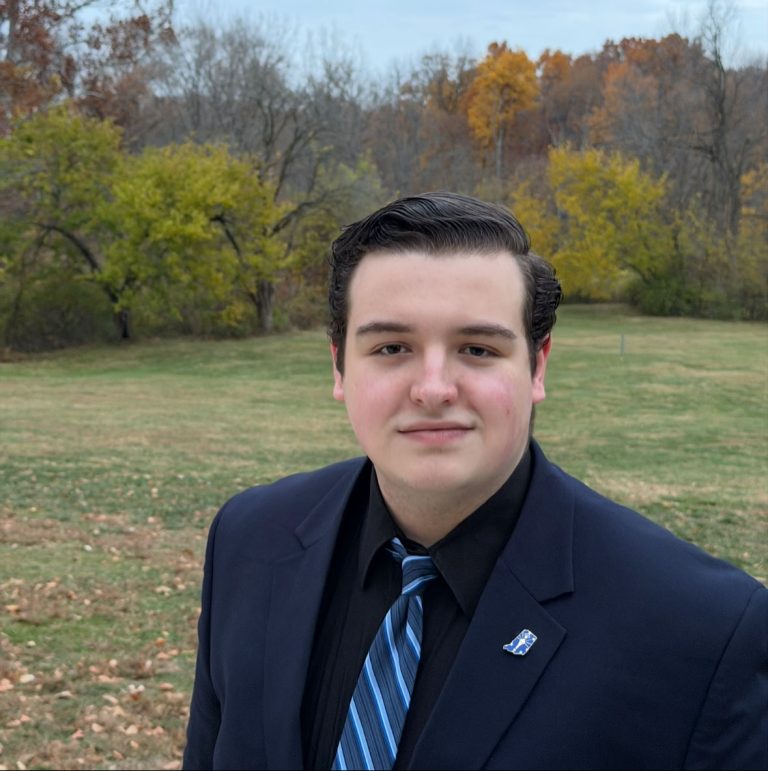According to Harvard University, artificial intelligence began to take root in the United States in the early to middle 20th century. There are several uses for AI in 2023, but recently there has been an emergence of AI generated art, which has caused a controversy for artists and critics alike.
Digital art has been around since the 1980s, according to Tate, which has similarities to AI generated art. The major difference, especially for artists, is that when it comes to digital art, they are still the ones creating the art and putting meaning into it; with art made by AI; however, there is no person putting meaning into it, but rather a machine taking aspects of artists’ work and generating its own.

According to American Scientist, since a computer cannot put feelings into art, this new phenomenon brings into question the very nature of what art is. One of the definitions for the word ‘art’ in the Merriam-Webster Dictionary is “the conscious use of skill and creative imagination especially in the production of aesthetic objects.” Given this definition, the art that is produced via AI would not be considered art at all. Without consciousness and creative imagination, there is a beauty that comes from creating that is lost when the humanity of the artist is taken out of the picture.
Regardless, this new phenomenon is still referred to as art, according to CNN. As someone who has been creating art my entire life, I think that the process of creating art and the stories that can come from artists are some of the most valuable components of art itself. With that said, I find it incredibly difficult to consider something produced by AI art in the same way I would label art made by a human being art.
In addition to the question of whether AI generated art can be considered art at all, there is a pressing ethical dilemma in the way that the AI derives its art. According to the Canadian Broadcasting Corporation, apps that create art by using AI do so by gathering data from other artists’ work without their permission to do so. This can be frustrating for artists who spend hours pouring their heart into their work only to see that a computer could generate something similar in a matter of seconds. Additionally, there have been artists that have looked into the copyright laws regarding their work being used in the creation of AI generated art—however, since the work being created by the AI only closely resembles artists’ original work and does not copy it, there is not a viable avenue for artists to take in terms of copyright.
As well as there are concerns from artists regarding their intellectual property, there are also concerns that AI generated art will take away jobs from working artists, according to Forbes. Artists are often employed in movies and video games for animation purposes, but if a computer can do their job more quickly and without pay, why would movie companies keep real people around? Although this is just speculation, there is a major concern amongst working artists that they could be replaced by AI soon.
According to a study done in 2019 by the University of Oxford, the researchers predicted that up to 30% of jobs could be replaced by AI by the year 2030. One of the main takeaways from this study, however, was that AI could become a tool for artists to use rather than a replacement for them. Oxford Internet Institute researcher Anne Ploin said that artistic creativity is about making choices to deliver a message to an audience, which is something that machines cannot replicate.
As AI becomes more pervasive in our society, jobs for artists will continue to be at risk. Whether AI art is ethical or not remains a debate as artists fight for intellectual ownership and credit for their art. Personally, I think it is unethical for AI to create art that takes input from and mirrors art that comes from art done by real people.







